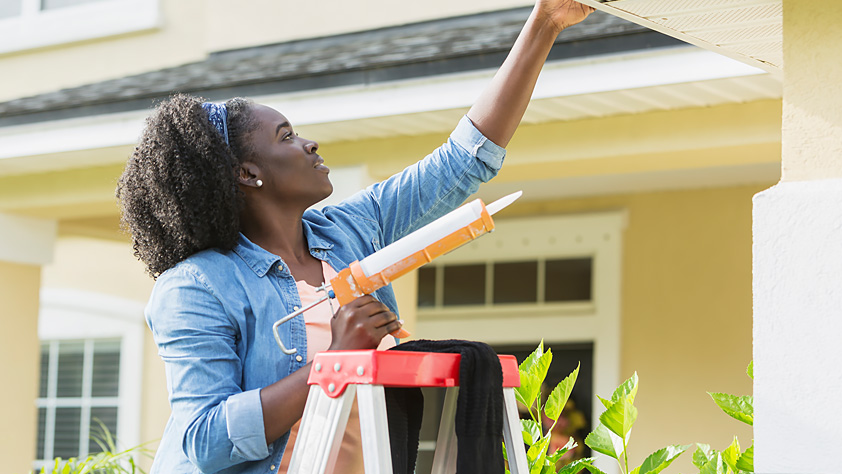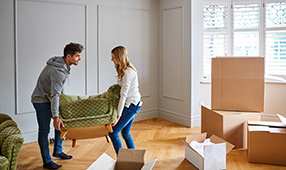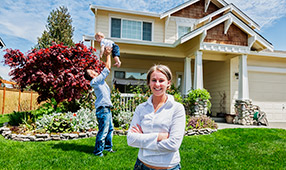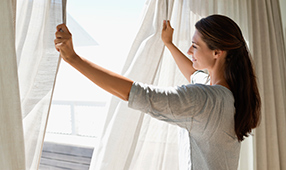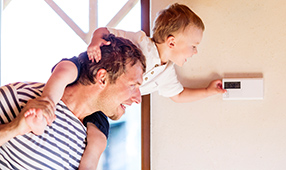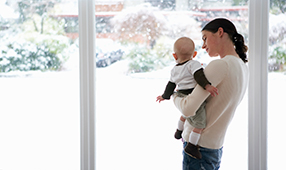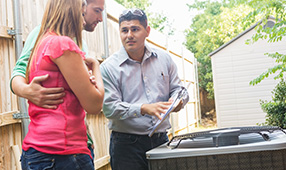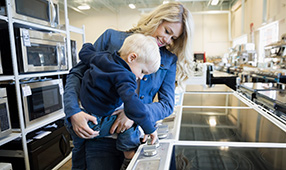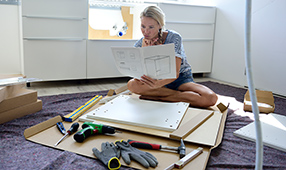If you’re ready to buy a home, you’ve probably planned for important ongoing homeownership costs such as your monthly mortgage, utilities, property taxes and insurance. Most of the time, however, the actual cost of homeownership adds up to much more. In fact, related expenses can end up dramatically expanding the amount you may think you need to maintain a home.
Zillow and Thumbtack, for example, say homeowners can expect to spend a whopping $9,390 every year on home-related expenses. This can include major purchases such as painting, updating flooring and replacing or repairing appliances and fixtures. This also includes minor ongoing costs such as gutter cleaning, lawn care and pressure washing.
The mortgage is just the starting point of costs that come with being a homeowner, and it's important to account for other expenses when determining what you can comfortably afford. Here are five kinds of common homeownership expenses that are easy to overlook, especially if you're a first-time homeowner, along with some ways to plan and prepare for them.
1. Repairs
Home repairs are inevitable, and the need can arise very quickly. A NerdWallet report found that 44% of homeowners experienced their first surprise repair within the first year after closing, and 12% faced one in the first month.
What types of unexpected issues are you most likely to encounter? The age, condition and location of the home could dictate the answer, simply because these factors can affect the lifespan of major components such as appliances, HVAC systems, plumbing, roofing, siding or water heaters. But even newer items without warranties can suddenly become high-dollar repair jobs.
Say you notice water stains on your ceiling shortly after you move in and discover a leaky roof. Nationally, the average roof repair costs $817, while the average new roof installation tops $7,600, according to HomeAdvisor’s True Cost Guide. And take a look at these typical costs for other common household breakdowns:
- Air conditioning system: Repairing a refrigerant leak costs $225 to $1,600 on average. Replacing a central AC unit ranges from $1,500 to $4,000.
- Refrigerator: Repairs average between $200 and $400. Replacement can run from $450 to $3,000, plus $150 to $250 for installation.
- Water heater: Repairs average between $216 and $923. Replacement cost to buy and install a new unit ranges from $762 to $1,426.
2. Improvements
Home buyers, often right after moving in, want or need to make changes to existing features or substandard equipment. What’s on the to-do list for the average homeowner? According to Zillow’s most recent Consumer Housing Trends Report, the top projects they’re most likely to tackle include:
- Landscaping
- Replacing or purchasing appliances
- Painting their home’s interior
- Replacing or adding furnishings
- Improving a bathroom
- Repairing or replacing carpet/flooring
Labor costs vary in different parts of the country, so these jobs can be more, or less, expensive depending on where you live. For example, in Los Angeles homeowners can expect to pay an average of $2,373 for an interior painting job, compared with the $1,566 owners in Wichita, Kansas can expect to spend.
3. Maintenance
If you've been renting, your landlord probably has picked up the tab for general maintenance of your abode. Once you have your own house though, you'll be footing the bill.
Taking care of the property you own comes with a bevy of regular upkeep. For instance, you’ll want to schedule a licensed HVAC inspection and service annually or biannually; clean the chimney and fireplaces; re-paint, stain, refinish or seal exteriors and interiors as needed; clean gutters and downspouts; service a septic system (if applicable); plan for snow removal; keep trees, shrubs, and lawn trimmed and mowed; and buy tools (such as a mower, leaf blower, saw, hammer, hoses, ladder and other supplies) if you plan to do-it-yourself vs. hire a pro.
All these costs can add up. As an example, the estimated cost of annual landscape maintenance (including lawn mowing, mulch application, pruning, and planting perennials or annuals) is $3,000, according to the 2018 Remodeling Impact Report: Outdoor Features by the National Association of Landscape Professionals and the National Association of Realtors.
4. Pest control
Another homeownership expense that may have previously been your landlord’s responsibility is ongoing pest control. Whether it’s a one-time extermination or a long-term contract, treatment and prevention for ants, roaches, rodents, termites, ticks or wasps will be another cost to add to the budget.
Homeowners are typically required to have termite inspections at the discretion of their insurance providers or lenders. Unfortunately, even if there is no infestation at the time of the inspection, that's no guarantee that problems won’t show up later.
What can you expect to pay? For a 1,500-square-foot property, the typical one-time cost for pest control is $300 to $550, according to HomeAdvisor’s True Cost Guide, while periodic visits on a quarterly basis can range from $100 to $300. Two factors that can increase these costs are the size of your property and the level of infestation.
5. HOA dues
Many properties and planned developments are subject to membership and fees charged by homeowners associations (HOAs). The Community Associations Institute estimates the number of HOAs nationwide in 2018 reached about 348,000, and Trulia found the average monthly HOA fee was $331 in 2015. Averages ranged from a low of $218 month in Warren, Michigan to a high of $571 in New York City.
These dues go toward different services, including upkeep of common areas such as a community’s landscaping, security gate or swimming pool. A key point: HOA fees may not always be a fixed cost. In some communities, they can be raised year-to-year based on estimates of future costs for things like utilities, labor and maintenance.
Most states require sellers to disclose HOA governance to prospective buyers, and you should also ask how often fees have increased over time, and by how much. Sellers also must provide HOA contact information and rules documents.
Make a plan to cover unexpected costs
While it’s hard to estimate how much you should set aside for unanticipated repair jobs and planned upgrades, there are a few general rules of thumb.
Some experts suggest budgeting 1% or 2% of a home’s purchase price to cover annual maintenance and repairs. For example, if your home cost $200,000, set aside $2,000 a year. Other recommendations call for budgeting $1 per square foot. So, if your home is 1,800 square feet, save $1,800 a year.
You can also start by getting a sense of the expected life of your home's bigger-ticket components and then saving enough each year to cover their eventual replacement.
To get a feel for how long your home’s appliances, products, materials, systems and components will last, check out this guide from the International Association of Certified Home Inspectors. Another helpful resource is the Remodeling 2019 Cost vs. Value Report, which can help you discover how much home-related projects cost in your area. And you can also tap into HomeAdvisor’s True Cost Guide, which provides average pricing nationwide for more than 300 types of projects by zip code.
Homeowners use cash from savings to pay for most home improvement and repair projects, according to a 2019 report from the Joint Center for Housing Studies of Harvard University. So, once you buy, a good way to make sure you have the money for homeownership costs when you need it is to set aside a fixed amount in your monthly budget. Consider parking that money in an easily accessible high-yield savings account, specifically earmarked for this purpose.
To make homeownership easier, NEA members can take advantage of a variety of financial benefits. Save on a wide range of home-related purchases through NEA Discount Marketplace. Members can also take advantage of a personal loan to help with larger costs such as a home remodel.
